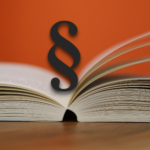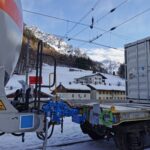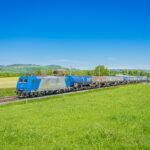Climate protection is at the top of the political agenda in Europe. A high demand for mobility of people and transport of goods has been leading to massive climate-damaging emissions in our intensively industrialised region for a long time. On the way to net zero, policymakers expect the rail sector to consistently exploit its advantages and make a substantial contribution to more resource-efficient logistics. Thanks to innovation, we have the chance to make the production of freight transport more efficient, ergo more cost-effective and more customer-friendly, and on top of that, we increase the availability of train paths on our existing rail networks.
Railway sector must digitalise
The conditions for meeting these political expectations are actually good. Europe has a dense rail network on which the railways can move large masses with low energy and space requirements compared to other modes of transport, and the important centres are all connected. However, many standards and working methods in the railway sector are massively outdated. And the specific characteristics of the individual countries sometimes diverge diametrically. This is a major reason why the increase in performance demanded by the rail sector has so far failed to materialise. The rail sector can only convincingly fulfil the high political expectations – to take on the key role in the implementation of climate policy – if it fundamentally renews itself. To do so, it needs a system-wide innovation push and harmonised sovereign rules in line with the state of the art.
EU-wide harmonised interoperability
This is where the technical pillar of the 4th EU Railway Package comes into play. It aims at a systematic harmonisation in international standard gauge traffic. The member states are called upon to apply the interoperability standards consistently and to harmonise the corresponding approval procedures internationally. In this way, the existing hurdles for cross-border traffic will be removed and the way opened for joint European innovation steps. This makes the technical pillar decisive for successful innovations in the European rail sector.
These comprise four thematic fields and will significantly improve the market position of rail transport in the coming years:
- Internationally harmonised sovereign regulations
- Cross-border compatible technical systems
- Internationally harmonised processes for safety-relevant activities
- Joint activities for system-wide guided further development
- Automation becomes marketable
Europe’s Rail Joint Undertaking (EU-Rail) has initiated an important cross-European development with the European Freight Digital Automatic Coupler Delivery Program (EDDP). This is intended to enable digitalisation and automation in freight transport. The development work should be so far advanced by 2025 that digital automatic couplers are available ready for series production for the upcoming migration of rolling stock.
Switzerland in the middle
From both an economic and a geographical perspective, it makes sense for Switzerland to participate actively and consistently in the ongoing EU activities – even more so in the context of the tug-of-war over the institutional framework agreement. The triggered revision of the Swiss Railway Act (EBG) for the autonomous adaptation of our sovereign regulations to the established Interop and Safety Directive of the 4th EU Railway Package is a welcome impetus for actively tackling the envisaged innovation packages now. The Swiss railway sector should and will use this innovation push to its advantage as soon as possible, in order to remain a competitive partner in the highly competitive transport sector in the future.



